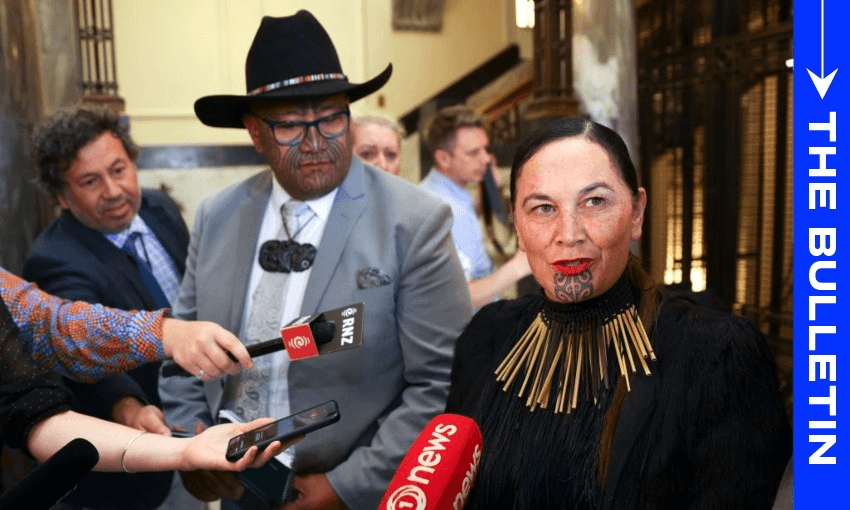A new poll shows the left bloc is back in the driving seat. With that comes the promise of bottom lines, explains Stewart Sowman-Lund for The Bulletin.
To receive The Bulletin in full each weekday, sign up here.
Electioneering starts early
Talk of “bottom lines” for the next election has seemingly already started, with Te Pāti Māori announcing at Waitangi that it will campaign on the creation of a new te Tiriti commissioner with extraordinary power. As Stuff’s Glenn McConnell reported, the commissioner would carry a “Tiriti veto” – effectively, the ability to stop any piece of legislation in its tracks should it not comply with the Treaty. The party’s co-leaders said the creation of the “full time watchdog” was about ensuring Māori self-determination, but it also poses a significant challenge to any prospective coalition parties. Two recent polls have shown Labour outpacing National for the first time since the election, the latter of these, from Talbot Mills, showing the left bloc would be able to govern. That means Labour will have to seriously consider demands from Te Pāti Māori made in the run up to next year’s election. RNZ reported that Labour leader Chris Hipkins wasn’t ruling in or out the possibility of a new commissioner, suggesting it wouldn’t be able to overrule parliament, while Act called for the opposition to end any speculation and called the policy anti-democratic.
The Kīngitanga returns to Waitangi
Writing for The Spinoff this morning, Liam Rātana said Te Pāti Māori’s push for a new commissioner “aligned closely” with sentiment from some speakers at Waitangi yesterday, as Kuīni Ngawai hono i te po was welcomed to the Treaty grounds for the first time as Māori monarch. “As Te Pāti Māori continues its quest for mana motuhake within parliament, the Kīngitanga and Kuīni Ngawai hono i te po carry forward the legacy of kotahitanga – a cause Kīngi Tūheitia championed throughout his reign,” Rātana wrote.
The arrival of the Māori monarch – the second successive visit to Waitangi by members of the Kīngitanga – was significant, explained Rātana. Some see Kuīni Ngawai as one day being capable of having enough influence to sway government policy. RNZ’s Ella Stewart has a good write-up on how the formalities played out yesterday, with speeches focused on unity.
‘Hard kōrero’
Just how long that unity will survive remains to be seen. As we discussed yesterday, while opposition parties have been capitalising on the mood at Waitangi ahead of the formal commemorations, the arrival of the government today could quickly shift the mood. As Lyric Waiwiri-Smith writes for The Spinoff, the absence of the prime minister also opens up a chance for the other two heads of the coalition to carve out their own positions on the relationship between Māori and the Crown.
Christopher Luxon’s place on the Treaty grounds will be taken by Māori development minister Tama Potaka, reported Waiwiri-Smith. He’s anticipating “hard kōrero, but also a welcoming atmosphere”.
Protest anticipated
As Waiwiri-Smith noted, New Zealand First ministers Winston Peters and Shane Jones are likely to receive a reasonably warm reception today, owing to the strength of their relationship with the North. The presence of Act’s David Seymour is expected to be less welcome. His own hapū, Ngāti Rēhia, had asked him to stay away from Waitangi. RNZ’s Jo Moir and Lillian Hanly reported that a protest group will make itself known during today’s pōwhiri. Seymour has anticipated this, saying he will release his speech in advance “so that anyone who’s truly interested in a dialogue can see what I went to say”.
Waitangi organisers, however, remain hopeful that protesters won’t disrupt the day, reported the Herald’s Adam Pearse. At least, won’t disrupt proceedings too much. “Protest by its very nature is aimed at a degree of disruption and as long as we’re able to carry out our obligations as a host, that’s fine,” said Waitangi National Trust chief executive Ben Dalton.
